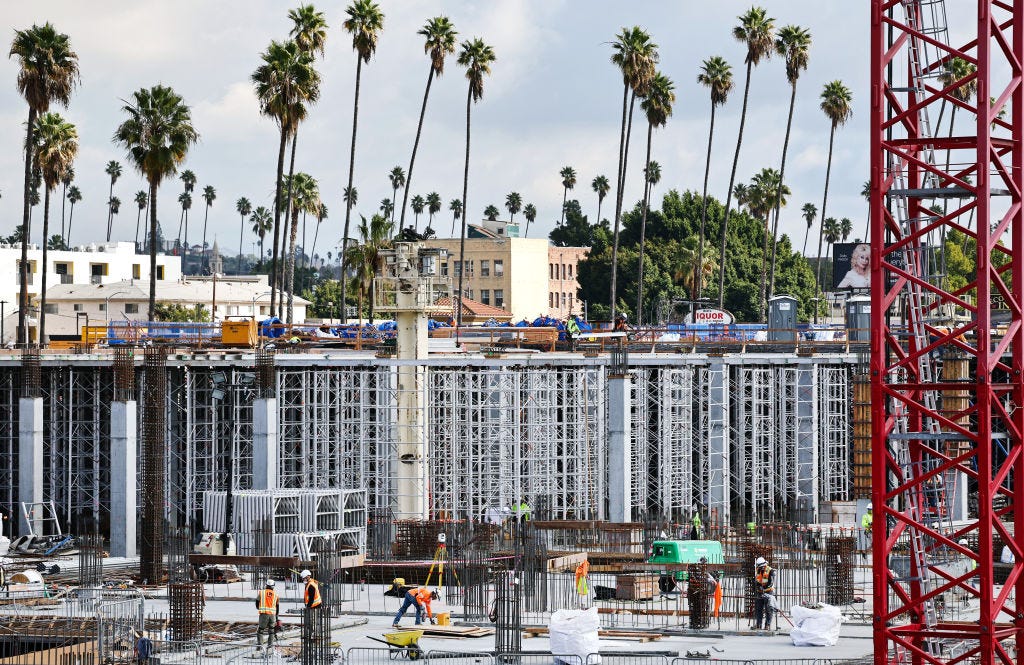Why Kamala Harris is a YIMBY
How the Democratic Party is learning to love building, and what it can do to solve the affordable housing crisis
The rent is too damn high.
To put that in wonky terms, the shortage of affordable housing costs the U.S. some $2 trillion a year. In less wonky terms, this crisis limits freedom, keeping people from living where they like, taking jobs they might enjoy, and creating the lives they want. Housing hits people where they live — because it is entirely about where they live.
Like many lasting American problems, a toxic mix of racism, class bias, and policy inaction has gotten the country into this mess, but it’s been difficult to get the political momentum to find an actual solution. That momentum has been building: as part of its efforts against inflation, the Biden Administration has committed a significant investment to housing construction and changing restrictive zoning rules (in its typically low-key way, the White House has not overly trumpeted the fact, leaving the door open to criticisms from the right that the Democratic agenda was really about restricting new construction and too focused on expanding rent control).
But with Harris at the helm, the message is front and center: “By the end of my first term,” she has said, “we will end America’s housing shortage by building 3 million new homes and rentals that are affordable for the middle class.”
That follows former President Obama sounding the call at the Democratic convention, building on the plan to revise zoning laws that he issued near the close of his second term in 2016 and making a commitment to address housing shortages a key part of his definition of the new way forward for the Democrats and for Kamala Harris.
Housing policy is a campaign issue now, for much the same reason industrial policy has been back on the agenda under Biden — because Democrats are embracing the idea that it’s important to do things for people that they can feel in their lives. It’s an essential element of what Harris has been calling the “opportunity economy”
To better understand how we got into a housing shortage in the U.S., how to detangle the ongoing policy and cultural arguments between NIMBY (Not In My Backyard) and YIMBY (Yes In My Backyard) factions, and to find out more about how YIMBYism got onto the Democratic agenda and what might change now that it has, we reached out to Matthew Lewis, communications director at California YIMBY and a longtime advocate for affordable housing construction in a state that pioneered exclusionary zoning, has seen some of its worst ongoing effects, and has given rise to a coalition that might point a way out of the crisis.
A request for those who haven’t yet joined us: The interviews and essays that we share here take research and editing and much more. We work hard, and we are eager to bring on more writers, more voices. But we need your help to keep this going. Join us today to support the kind of independent media you want to exist.
At the convention and since we’ve seen a resurgence of housing policy on the Democratic agenda. There’s real progressive energy behind the YIMBY movement now. But obviously California has a long history of NIMBYism and there’s been a YIMBY response more recently, the movement that you’ve been a part of.
So right now, I'm taking you for a walk with me in my neighborhood at Berkeley. The reason I mention this is that Berkeley pioneered the creation of different residential zone districts to achieve the objective of racial segregation. And that was in 1916. And it wasn't like they were subtle. They weren't ashamed of it. It was a very popular notion to have neighborhoods where only white Christian people could live.
The idea, though, that expands from that is the use of zoning as a tool for racial and class segregation. And I think it's important to ground it there because the reality of the history of the YIMBY movement is that you've had planners and affordable housing developers and early urbanists who for decades have been trying to undo these deliberate segregationist policies.





